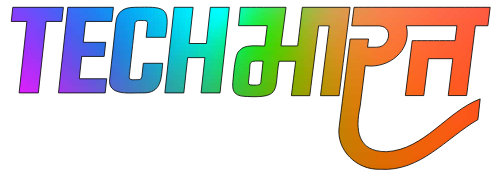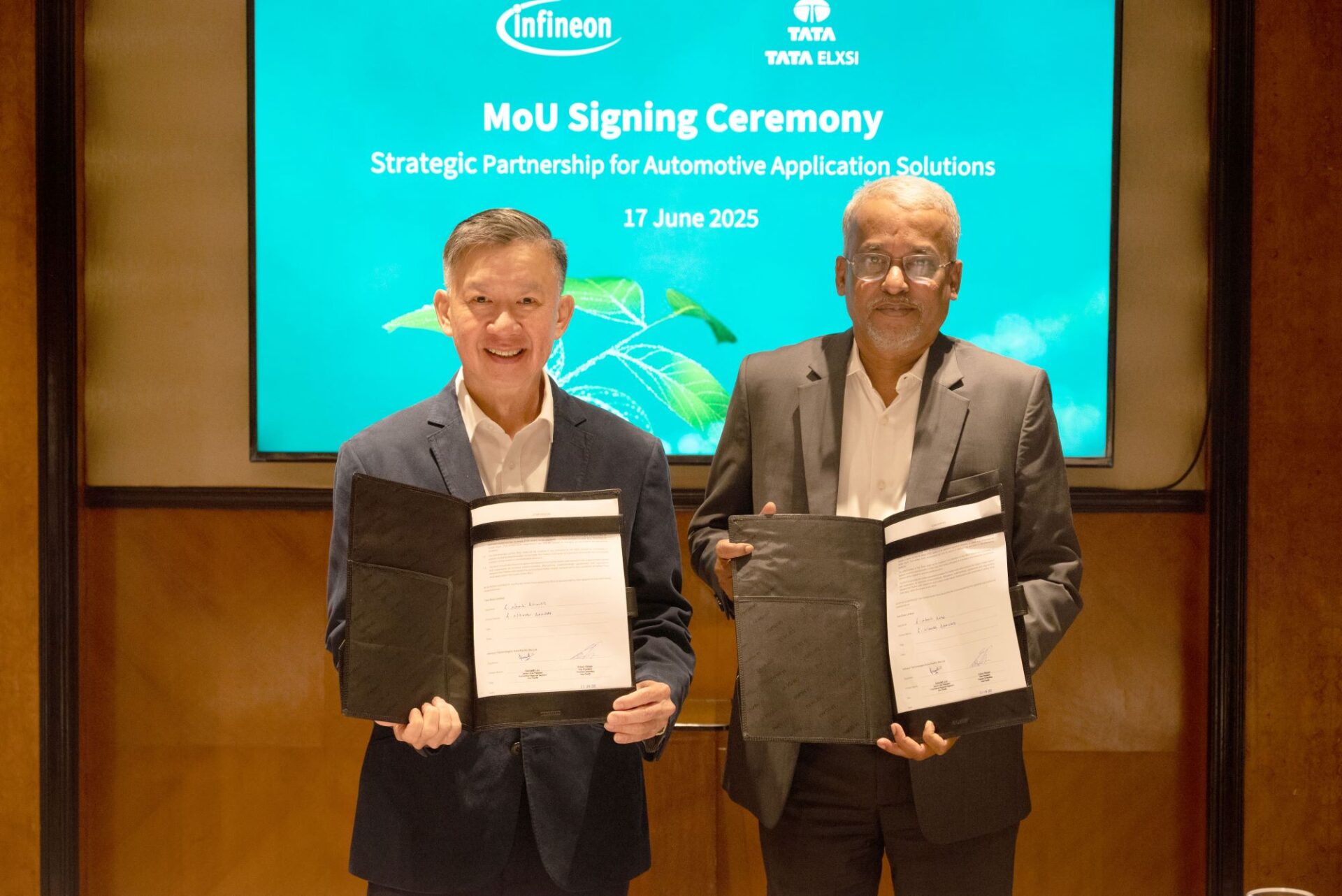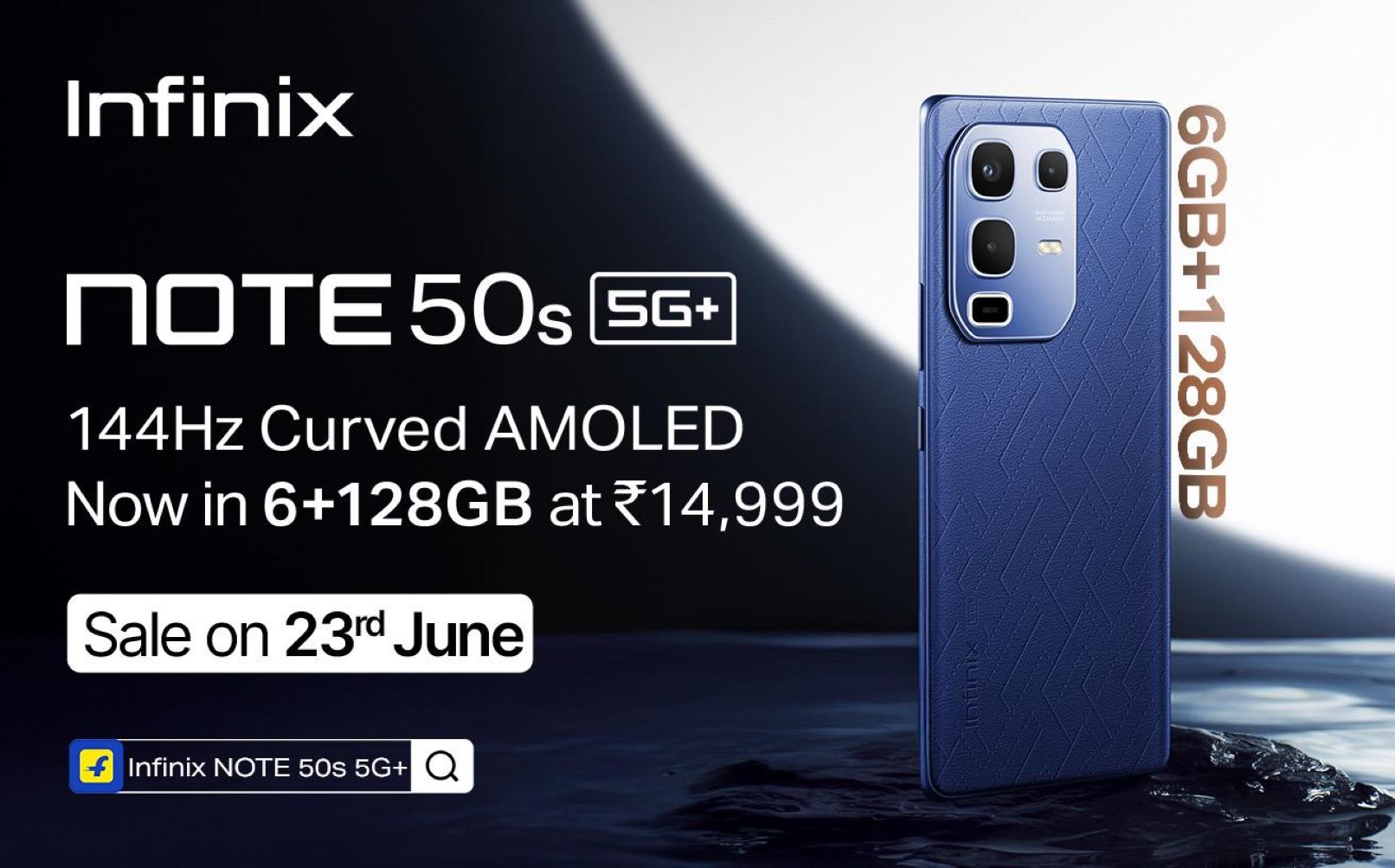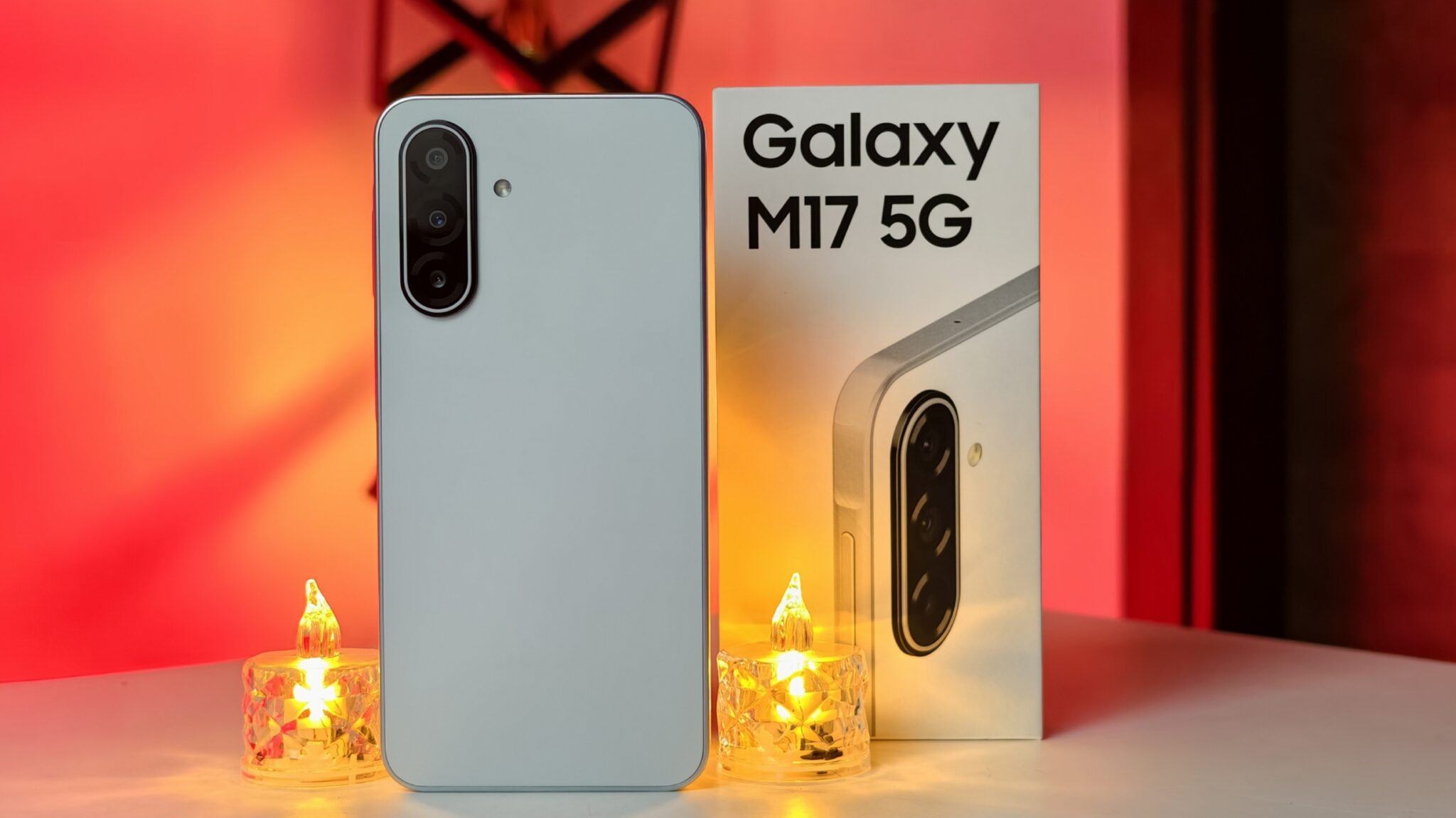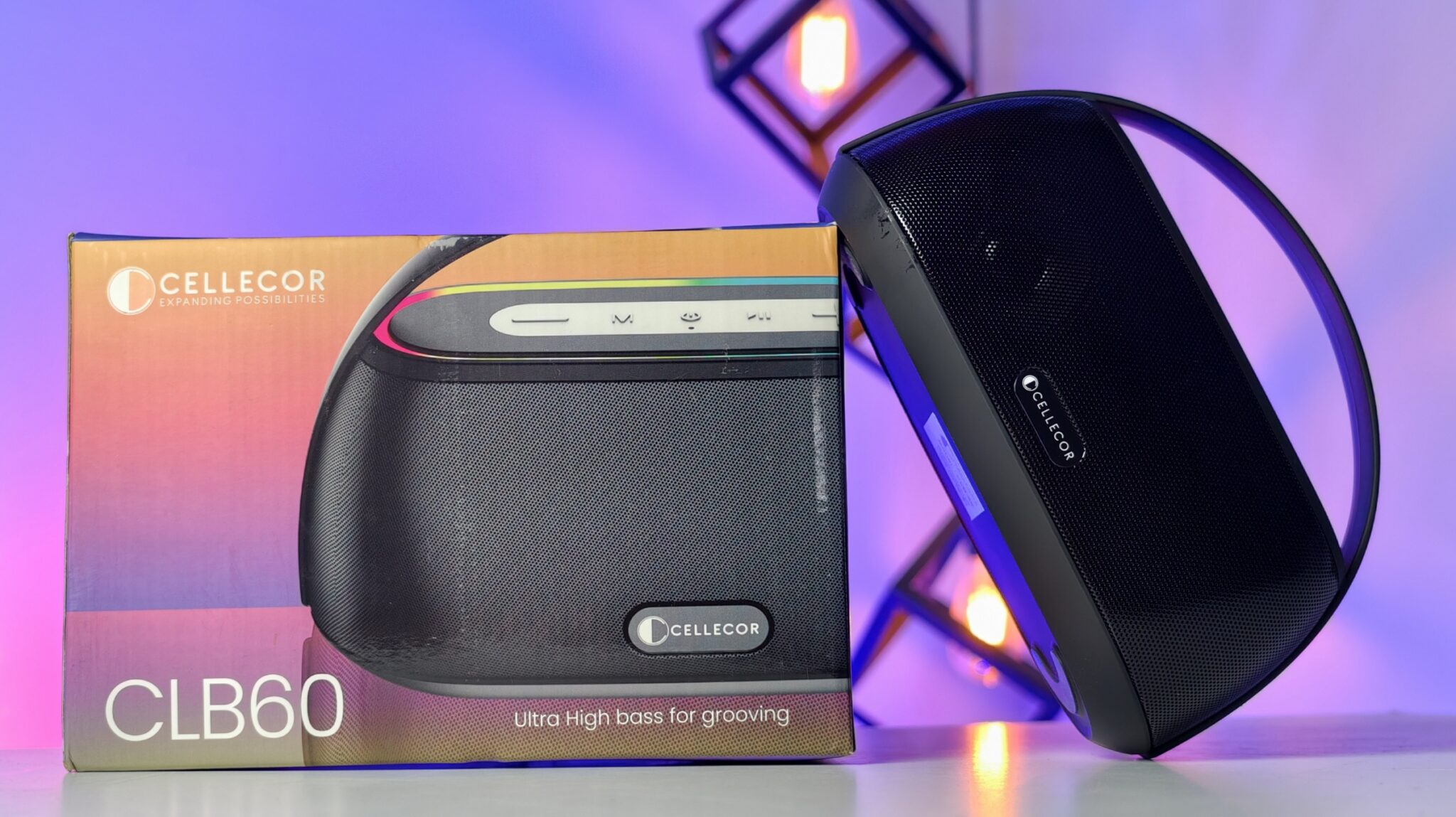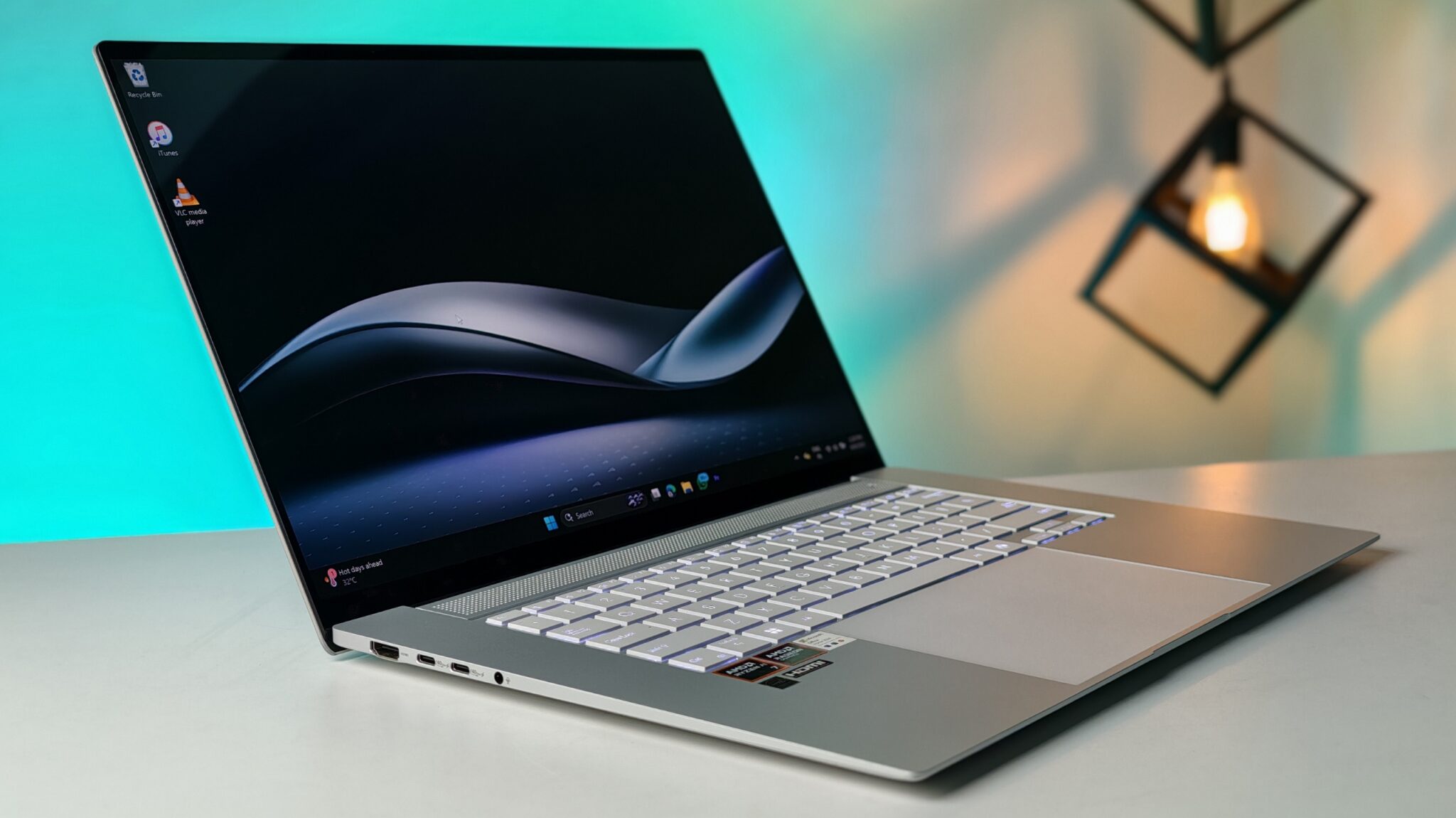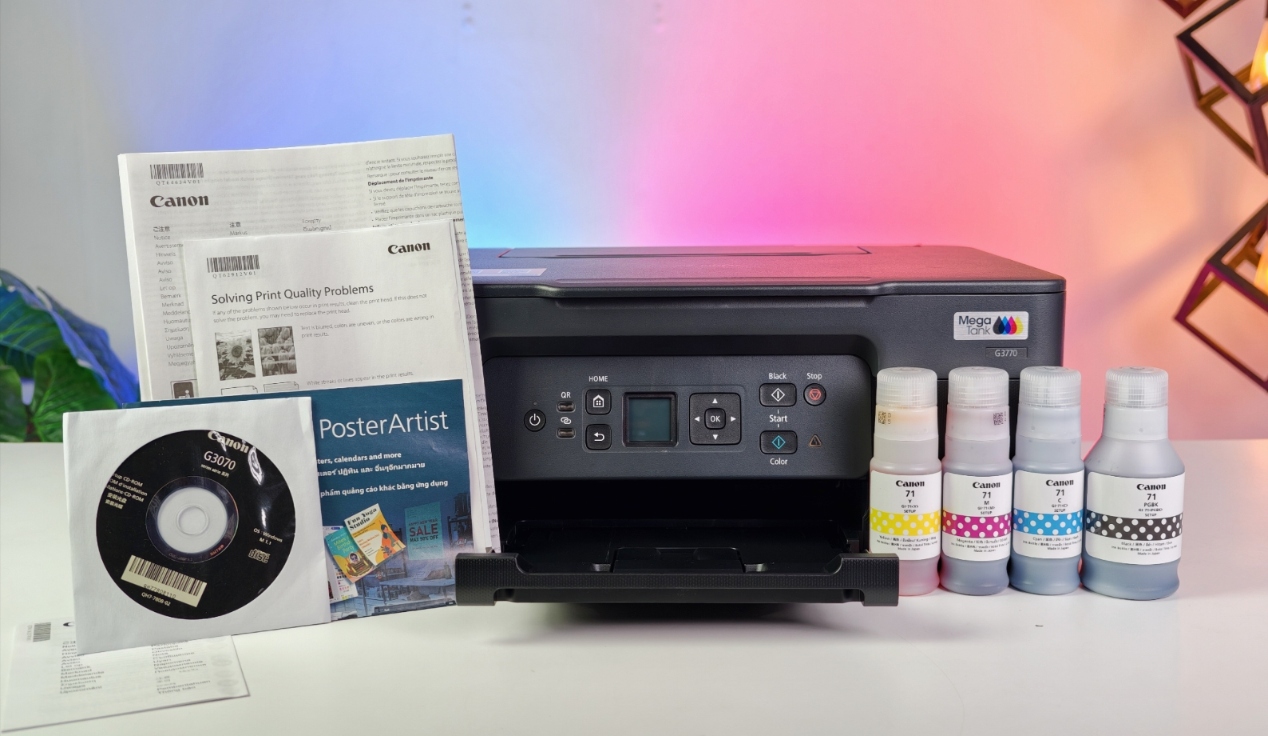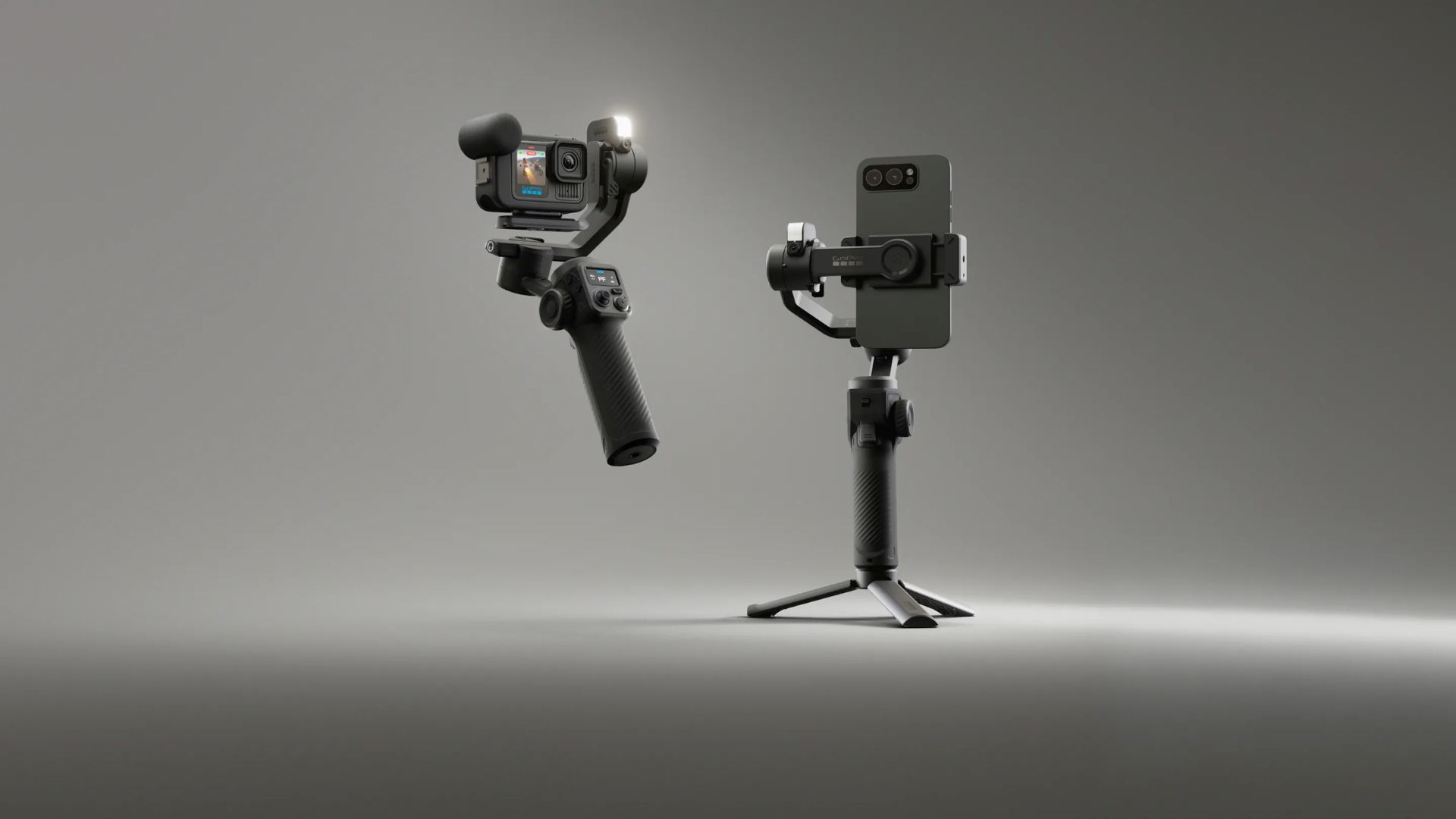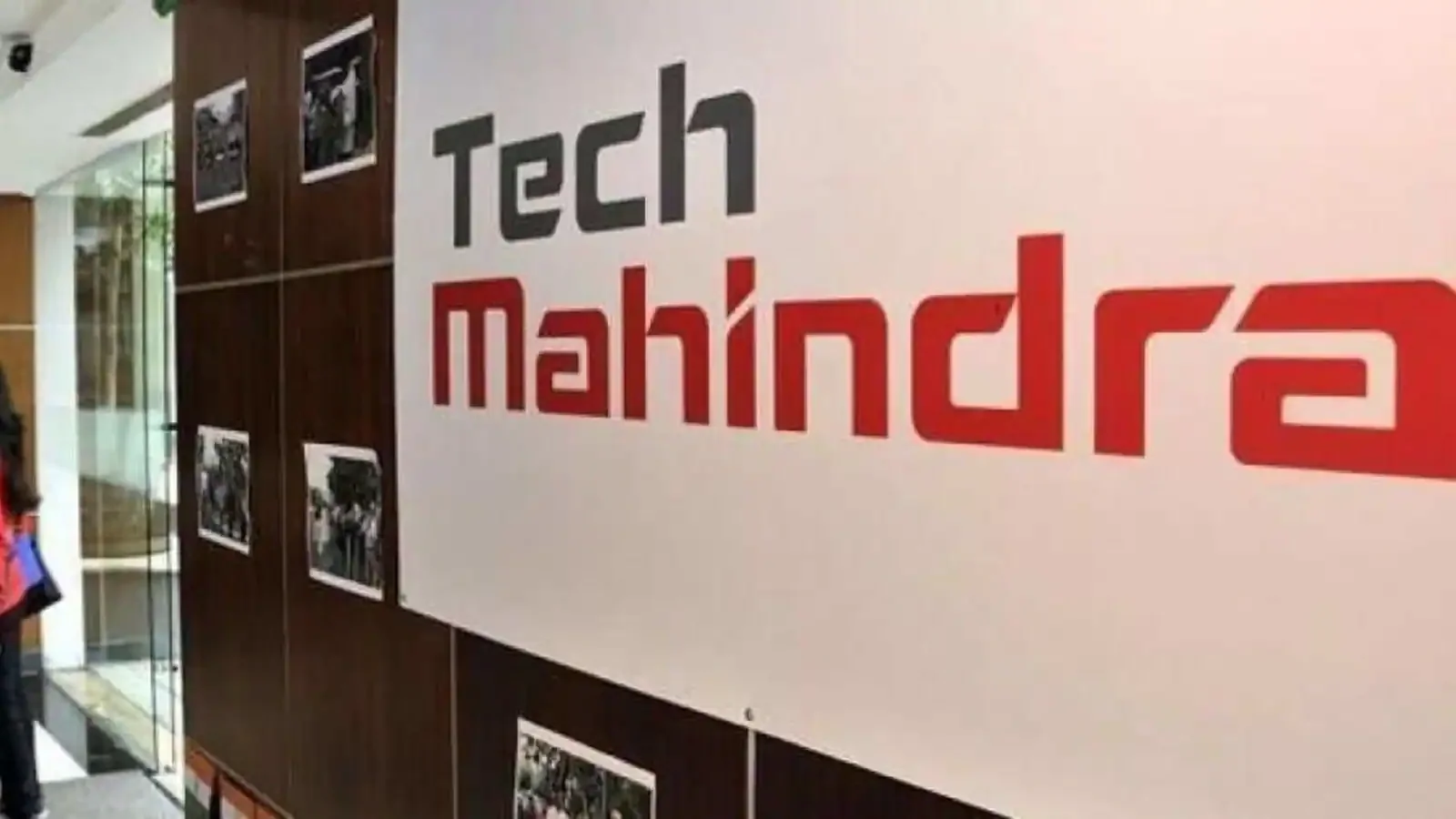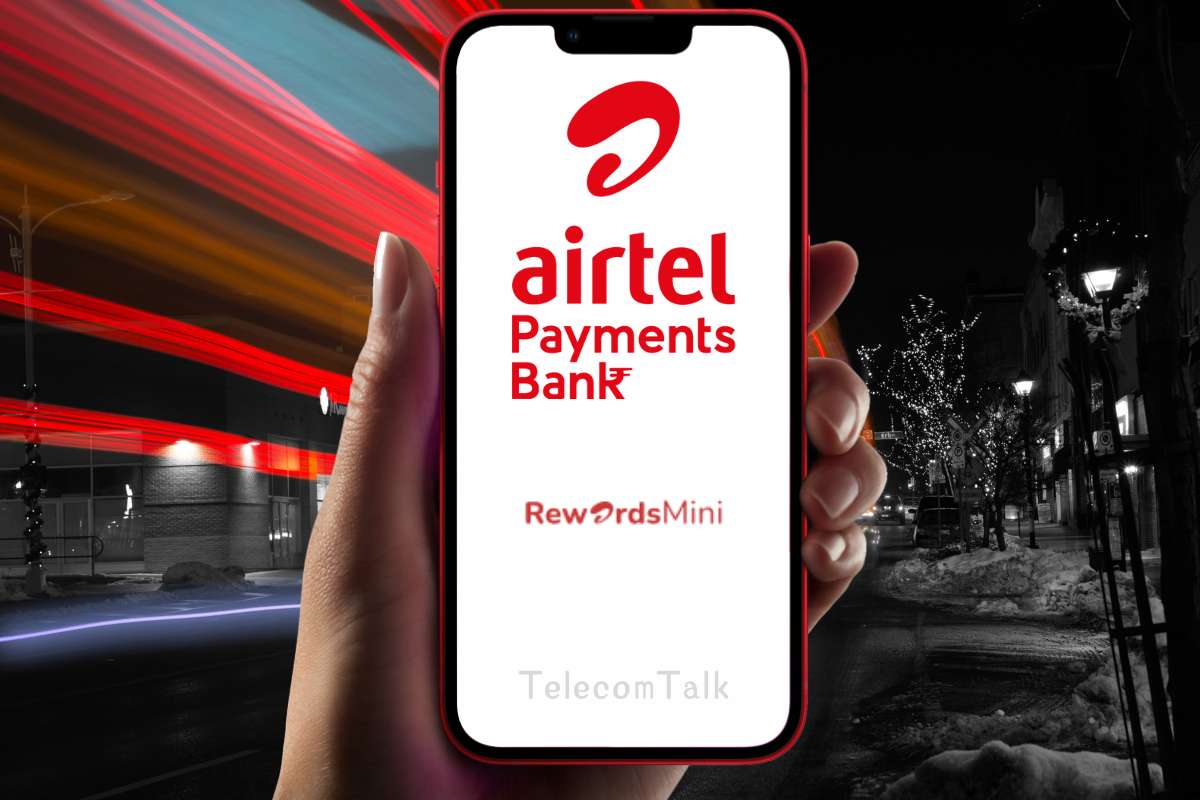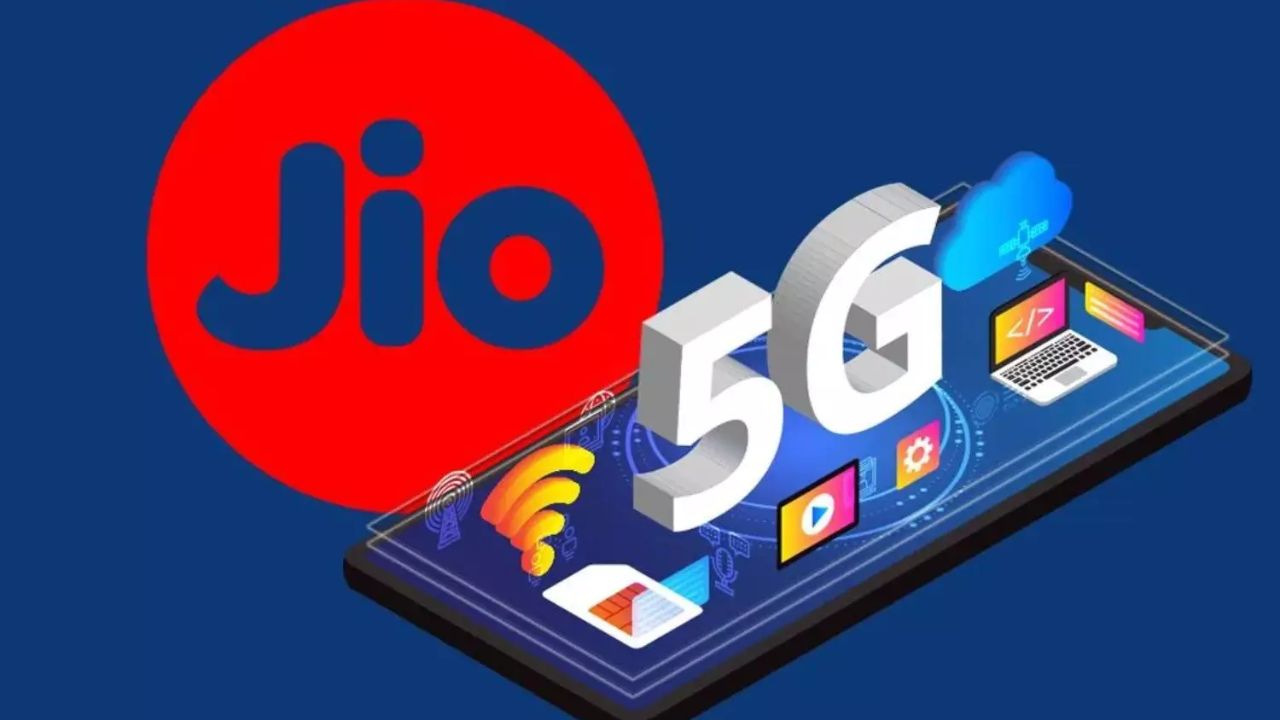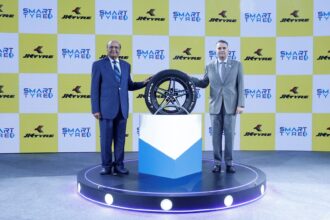India just got a serious boost in its electric vehicle (EV) ambitions. Tata Elxsi, a well-known design and tech services firm, and Infineon Technologies, a heavyweight in semiconductor innovation, have officially inked a Memorandum of Understanding (MoU). Their aim? To co-develop EV solutions that don’t just meet the Indian market’s needs but are actually designed with them in mind. It could prove to be a big turning point for the country’s EV journey.
- Key Takeaways:
- A Strategic Alliance for Indian Electrification
- Driving Forces: India’s EV Ambitions and Market Dynamics
- The Technology Core: Building Advanced EV Systems
- Safety at the Forefront: ASIL-D and ISO 26262
- Voices from the Partnership
- Broader Impact and Future Outlook
- What It Means for Indian Consumers
- Frequently Asked Questions (FAQs)
Key Takeaways:
- Tata Elxsi and Infineon Technologies have joined hands via an MoU to create EV solutions tailored for India.
- Their focus includes 2-wheelers, 3-wheelers, passenger cars, and commercial vehicles.
- Tech priorities: high-voltage inverters, scalable battery management systems (BMS), bi-directional onboard chargers, and high-voltage thermal management.
- Safety is a cornerstone, with solutions targeting ASIL-D compliance under ISO 26262 standards.
- The effort supports NITI Aayog’s national EV goals for 2030.
The timing is no coincidence. EV sales in India have been picking up fast—in 2024 alone, we saw a 25–30% jump overall, and a sharp 28% rise in the two- and three-wheeler segments. Clearly, more people are warming up to the idea of going electric. But that kind of growth also makes one thing clear: India urgently needs tech that’s locally grounded, high-quality, and, most importantly, safe. This partnership aims to tick all those boxes.
A Strategic Alliance for Indian Electrification
Each company brings its own strengths to the table. Tata Elxsi is known for its knack in design, system integration, and validation. They’re deep into automotive R&D, working across areas like autonomous vehicles, EVs, connected tech, and even software-defined vehicles. With over 13,000 engineers and specialists in their global network, they’ve got the muscle to take on complex system development.
Infineon, meanwhile, is the chip wizard here. Their semiconductors play a vital role in driving both decarbonization and digital transformation. For this venture, they’re bringing in early access to some of their latest technologies—think silicon carbide (SiC) components, microcontrollers, and integrated circuits (ICs). These aren’t just fancy buzzwords; they form the backbone of modern EV powertrains and control systems.
Now, the SiC tech in particular deserves a spotlight. Compared to older silicon-based components, SiC handles higher voltages, boosts power density, and sheds less heat. In plain terms, that means more efficient vehicles with better range, faster charging, and more compact (and lighter) parts. Add in smart microcontrollers and targeted ICs, and you’ve got a recipe for smarter, safer, and more reliable EV systems.
Driving Forces: India’s EV Ambitions and Market Dynamics
India’s move toward electrification isn’t just a passing trend. It’s being shaped by clear national objectives, particularly from NITI Aayog—the government’s main policy think tank. Their vision? By 2030, 80% of two-wheelers, 70% of commercial vehicles, and a significant chunk of all road transport should be electric.
Several things are helping push the needle here. Soaring fuel prices, greater eco-consciousness, and government schemes like FAME II have all made EVs more appealing. Still, it’s not all smooth sailing. Charging infrastructure remains patchy, upfront costs are still a challenge for many, and range anxiety is real. The Tata Elxsi-Infineon collaboration hopes to ease those concerns by offering cost-efficient, reliable, and safety-centric solutions.
The Technology Core: Building Advanced EV Systems
Let’s get into the nuts and bolts. The technical roadmap laid out by this partnership isn’t just ambitious—it’s well-targeted. Here are the key components they’re working on:
- High-Voltage Inverters: These are crucial for converting battery power into usable energy for the motor. Efficient, high-voltage inverters mean better performance and energy use.
- Scalable Battery Management Systems (BMS): Think of BMS as the health monitor for EV batteries. They ensure each cell is performing optimally, manage charge/discharge cycles, and prevent overheating. And scalable? That just means they can work for both a scooter and a delivery truck.
- Bi-Directional Onboard Chargers: These aren’t just about charging your EV. They also allow the vehicle to send power back—either to the grid (Vehicle-to-Grid or V2G) or to power gadgets (Vehicle-to-Load or V2L). It’s smart, versatile, and forward-thinking.
- High-Voltage Thermal Management: EVs generate heat—lots of it. Effective cooling systems are critical for safety and longevity, especially as power levels go up. It’s a detail that’s easy to overlook but impossible to ignore.
All these innovations are designed with India’s varied vehicle landscape in mind. And the roadmap doesn’t stop at road transport. They’re eyeing sectors like eVTOL aircraft, energy storage, and even off-road applications.
Safety at the Forefront: ASIL-D and ISO 26262
Let’s talk about safety—because it matters. The solutions developed under this MoU are expected to meet ASIL-D standards, the highest level of automotive safety under the ISO 26262 framework.
To break it down:
- ISO 26262 outlines how to ensure the functional safety of electronic systems in vehicles—basically, it provides a roadmap for developing fail-safe components.
- ASIL-D, the toughest tier, means the tech must operate flawlessly even in the most critical safety scenarios, like braking systems or battery controls. Getting this right isn’t just a regulatory box to tick; it builds consumer trust, which is essential for mass adoption.
Voices from the Partnership
Nambi Ganesh, Head of Automotive at Tata Elxsi, shared that Infineon’s tech is already a core part of their EV platforms. The new MoU just makes that collaboration more defined, paving the way for faster development and better alignment with what the Indian market actually needs. He reaffirmed their focus on delivering production-grade, compliant platforms as India moves deeper into the EV era.
Kenneth Lim, Senior VP, Automotive, Infineon Asia Pacific, echoed the sentiment. He sees this partnership as a real opportunity to hit India’s electrification goals head-on. The synergy between Tata Elxsi’s integration capabilities and Infineon’s semiconductor tech, he said, could fast-track EV deployment while ensuring top-notch safety and performance.
Broader Impact and Future Outlook
This isn’t just about a single product or short-term goal. The Tata Elxsi-Infineon alliance is expected to create a ripple effect:
- Local Development: With application-ready EV solutions built in India, there’s potential to cut down on import dependence.
- Higher Safety Standards: ASIL-D and ISO 26262 adherence will lift the baseline for EV safety nationwide.
- Cost Savings: Optimized designs and smart components could help bring EV prices down for everyday consumers.
- Skill Growth: The joint effort will likely spur knowledge sharing and workforce development in high-tech automotive fields.
In the long run, expect this partnership to have its sights on more than just cars. eVTOL aircraft, power storage, and off-road electric tech are all on the horizon. It’s not just a business move—it’s a strategic bet on India’s sustainable future.
What It Means for Indian Consumers
So, what does all this mean for the average car or scooter buyer in India?
- Safer EVs: With top-tier safety protocols baked in, consumers can expect a more secure driving experience.
- Better Efficiency: From faster charging to longer range, the tech upgrades could make daily use more convenient.
- Affordable Options: Streamlined design and production might help lower costs, expanding access to EVs.
- Quicker Innovation: Faster development cycles could mean newer models and features hitting showrooms more rapidly.
All told, India’s electric mobility journey is accelerating—and partnerships like this are helping steer the way.
Frequently Asked Questions (FAQs)
Q1: What is a Memorandum of Understanding (MoU)?
A1: An MoU is a formal agreement between parties outlining the terms of a collaboration. It sets the groundwork for future contracts and shows both sides are committed to working together.
Q2: Why is India seeing such rapid growth in EV sales?
A2: Factors like high fuel prices, better environmental awareness, and government incentives have all contributed. Affordable EV models, especially in the two- and three-wheeler segments, have also made a big difference.
Q3: What are Silicon Carbide (SiC) components, and why are they important for EVs?
A3: SiC is a powerful semiconductor material that helps EVs operate more efficiently. It handles higher voltages, reduces heat, and allows for more compact components, which means better performance overall.
Q4: What does ASIL-D compliance mean for EV safety?
A4: ASIL-D is the highest level of functional safety under ISO 26262. It ensures that critical EV systems are built to minimize the risk of failure in life-threatening scenarios.
Q5: What is NITI Aayog’s role in India’s EV strategy?
A5: NITI Aayog sets policy and strategic goals for national development, including aggressive targets for EV adoption by 2030. Their role is key in shaping and pushing forward India’s electric future.
Q6: What are bi-directional onboard chargers, and what is their benefit?
A6: These chargers let EVs take power from the grid and send it back out. That could mean stabilizing the grid (V2G) or even running appliances (V2L), adding a whole new layer of utility to owning an EV.
